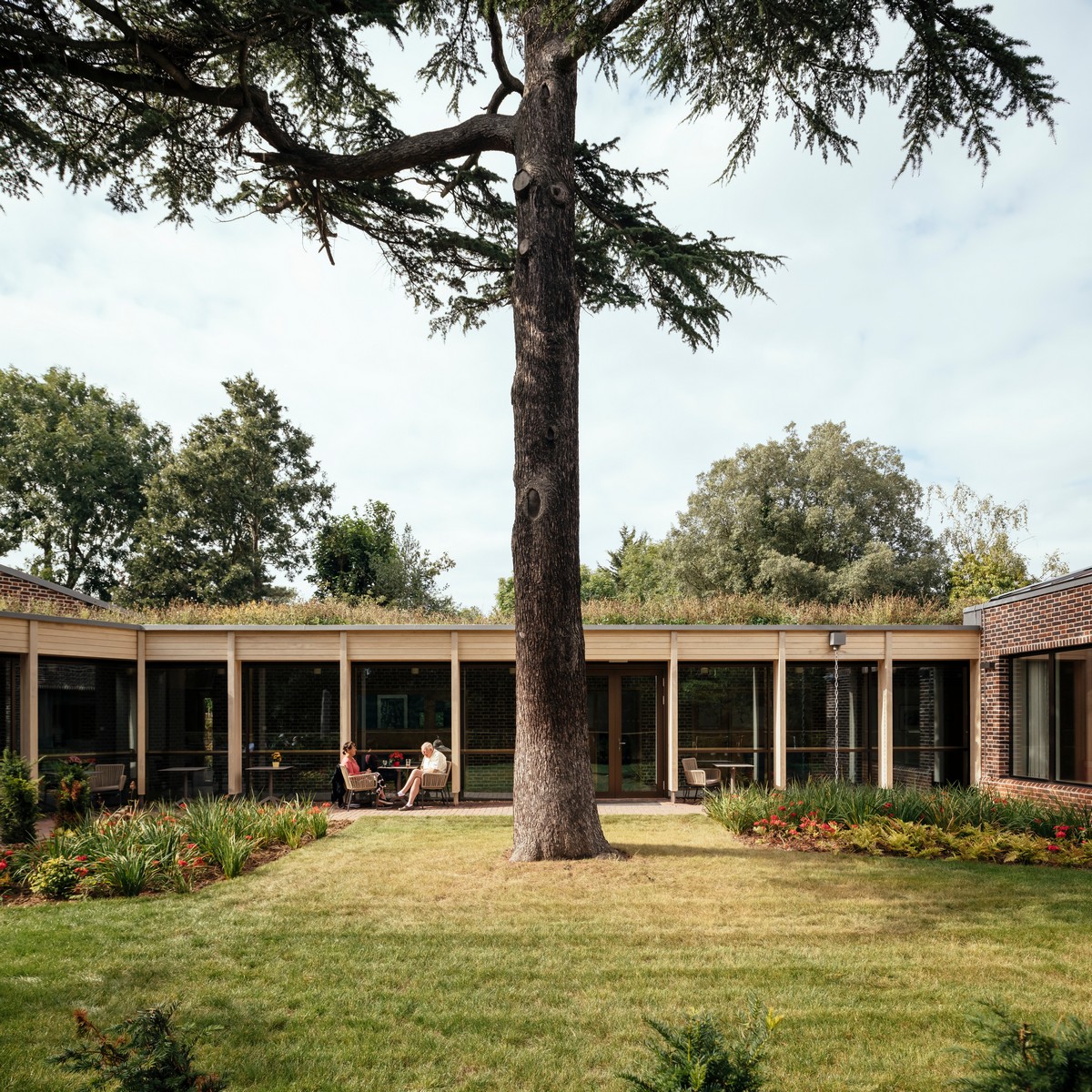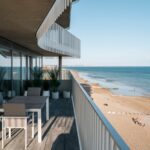International Architecture Awards, Results, News, Building, Architect, Engineers
International Architecture Awards 2009 News
The Chicago Athenaeum Architectural Prize Winners 2009 News
10 Sep 2009
International Architecture Awards 2009 Winners
The Chicago Athenaeum, IL, USA
Finnish Architects Select 97 Buildings In Thirty Nations To Win The World’s Most Prestigious 2009 International Architecture Awards
International Architecture Awards 2009
The Chicago Athenaeum: Museum of Architecture and Design and Metropolitan Arts Press Ltd. and co-presented by The European Centre for Architecture Art Design and Urban Studies, announce ninty-seven (97) new distinguished projects and urban schemes selected in this year’s prestigious International Architecture Awards® program for 2009.
Given the record numbers of entries this year and the widest geographic distribution of buildings worldwide, The International Architecture Awards have become a global event of an unprecedented scale—the most important barometer for the future direction of new architectural design and thinking today—celebrating, recognizing, and highlighting the world’s foremost architectural solutions for the designs of new skyscrapers, corporate buildings, institutions, arts facilities, airports, private homes, industrial structures, and urban planning projects from London to Singapore.
The International Architecture Awards is the only Global Awards Program in architecture of its kind, which was conceived and presented by the Museum and in partnership with The European Center for Architecture Art Design and Urban Studies to give an important overview of design and architecture on a world scale.
The Awards Program draws important public and professional focus for the celebration and recognition of the most important key buildings produced in this decade, underscoring the highest level of imagination and inspiration of the “best of the best” architectural minds practicing design today. The selected projects challenge new approaches to design that are beyond the envelope of the everyday, while providing cities with key civic building that celebrate and harmonize architecture as a high art while finding answers to the complicated problems of environment, social context, improving quality of life, and sustainability.
And the list of this year’s winning schemes is impressive drawn by some of the world’s most talented thinkers from large and small architectural practices around the world. The glossary of entries is a “Who’s Who” in international architecture practice today.
For the 2009 International Architecture Awards , the Museum received hundreds of submissions from design firms in Europe, Asia, Africa, Australia, and the Americas. The submissions ranged from the latest new corporate high-tech headquarters to smaller planning projects, bridges, memorials, sacred spaces, and private residences. All submitted projects were designed by architects in their respective countries of origin or abroad for both built and unbuilt projects alike, as of January 1, 2006.
This year’s jury for awards took place in Helsinki, Finland under the auspices of the Finnish Association of Architects (SAFA) and included some of the most influential design minds in Finland:
• Rainer Mahlamäki, President, Finnish Association of Architects (SAFA), Helsinski, Finland and Principal, Architects Lahdelma & Mahlamäki, Helsinki, Finland
• Kaj Forsblom, Galerie Forsblom, Heksinki, Finland
• Kivi Sotamaa, Principal of SOTAMMA DESIGN, Ltd. and Visiting Professor, Department of Architecture, UCLA, Los Angles, California, USA
• Anne Stenros, Vice President/Design Director, KONE Ojy., Espoo, Finland
• Ilkka Suppanen, Architect/Designer, Studio Suppanen, Helsinki, Finland and Professor, University of Art and Design Helsinki, Finland
• Markku Valkonen, Director, EMMA Espoo Museum of Modern Art, Espoo, Finland
The International Architecture Awards are curated and organized by Christian K. Narkiewicz-Laine, the Finnish Architecture Critic and President, The Chicago Athenaeum and assisted by Lary L. Sommers, Director of Administration/Marketing and Ioannis Karalias, Museum Vice President, The Chicago Athenaeum, and Kieran Conlon, Director/COO from the European Centre for Architecture, Art, Design, and Urban Studies.
The geographic range in this year’s Awards Program attests to the global significance of this program organized by The Chicago Athenaeum and The European Centre.
Out of the ninty-seven (97) projects selected for awards, The United States received the highest number of thirteen (13) awards followed by China with eight(8) and Japan and Great Britain with seven (7) and
Germany having six (6) awards. The Netherlands, Brazil, Italy, Canada won four (4) awards each.
Australia won three awards, while Vietnam, Portugal, South Africa, Taiwan, Austria, Ireland, France, and Slovenia were given two (2) awards each. Single awards were given to Korea, United Arab Emirates, Switzerland, Latvia, Denmark, Iran, Luxembourg, Uganda, Burkino Faso, and Indonesia.
International Architecture Awards Winners in 2009 : buildings + architects
Those winning firms include:
Adrian Smith + Gordon Gill Architecture (USA), AGC Design Ltd. (Hong Kong), Airmas Asri (Indonesia), Alsop Architects (UK), Architecton/Akira Yoneda (Japan), ARX Portugal Aquitectos (Portugal), Atelier Brückner (Germany), Bjarke Ingels Group (Denmark), Baumschlager Eberle Louchau (Switzerland), Bruno Deslandes-ARCHItravs (Latvia), Bucholz McEvoy Architects Ltd. (Ireland), China Architecture Design & Research Group (China), Claudio Silvestrin Architects (UK), de Architekten Cie (The Netherlands), Dekleva Gregorc Architekti (Slovenia), Diamond and Schmitt Architects (Canada), DL-WAA-OA (Canada), Dorner/Mat Architekten (Austria), DSDHA (UK), Edward Suzuki Associates (Japan), Elliott + Associates Architects (USA), FAREstudio (Italy), GRAFT Architects (Germany), Gustafson Porter (UK), Harry Seidler & Associates (Australia), Hideki Yoshimatsu + Archipro Architects (Japan), Hotson Bakker Boniface Haden architects + urbanistes (Canada), IAD International Architecture (Spain), Ingenhoven Architects (Germany), Isay Weinfeld Arquitectura (Brazil), J. Mayer H. Architects (Germany), KieranTimberlake (USA), Kojo Tsutsui Architect and Associates (Japan), Kuwabara Payne McKenna Blumberg Architects (Canada), LAN Architecture (France), LOT-EK (USA), LOOK Architects (Singapore), Louise Braverman (USA), Luca Medici studio M2R atelier d’architettura (Italy), Lyn Rice Architects (USA), MCA Mario Cucinella (Italy), Mark Cavagnero Associates (USA), Mecanno Architecten (The Netherlands), Nieto Sobejano Arquitectos (Spain), Noero Wolff Architects (South Africa), N+B Architectes (France), querkraft zt GmbH (Austria), Randall Stout Architects (USA), Realarchitektur (Germany), Sadar Vuga Arhitekti doo (Slovenia), Rogers Stirk Harbour + Partners (UK), SCDA Architects Pte. Ltd. (Singapore), Sean Godsell Architects (Australia), Shay Cleary Architects (Ireland), Skidmore, Owings & Merrill (USA), Studio MK27 (Brazil), Souto Moura Arquitectos SA (Spain), Tarh O. Amayesh (Iran), Van der Merwe Miszewski Architects (South Africa), Vo Trong Nghia Co. (Vietnam), WOHA Designs Pte. Ltd. (Singapore), wsp architects (China), XTEN Architecture (USA), and Zaha Hadid Architects (UK).
“Through The International Architecture Awards,” states Rainer Mahlamäki, President of the Finnish Association of Architects and Chair of the Jury, “The Chicago Athenaeum and The European Center bring to our attention the whole global scale of architecture: from projects to completed buildings; from small houses to complex building masses; from renovation to new buildings, from interior design to wide landscape designs. This can be regarded as highly positive since it shows the whole scale of the architecture practice globally.”
“I was impressed by the variety of the types of entries in the Awards Competition,” states Finnish Architect Kivi Sotamaa. “There were some clear groups with similar style and visual language. These can be seen as different styles of architecture at the moment. My personal interest or criteria of evaluation in selecting the winning projects is not about style, but rather about the idea, quality and originality.”
“Personally I was surprised how good overall picture of contemporary architecture one can get based on this kind of program,” commented Anne Stenros, Vice President of Design for KONE Corporation in Finland. “Architectural awards are important from two points of view. First, they create a base for bench-marking of best practices in the field. Secondly, they act as an international launch bad for young and up-coming talents,” she concluded.
“The most innovative projects were the urban landscapes—the ‘green belt’ projects—and also those buildings using local form language and local materials, Ms. Stenros added. ‘The buildings reflecting the international style were lacking this sense of place and the sensitivity of the materials used.’ I like the fresh approach of the Centro de Artes Nadir Afonso Museum in Portugal by architect Louise Braverman and the casual atmosphere of the Sheila C. Johnson Design Center by Lyn Rice Architects. They both reflect the open idea of architecture as a platform for people to create something of their own.”
It has been great pleasure to review so many different projects varying in form, scale, typology, and situation,” continued the Finnish designer Ilkka Suppanen. “This also makes it challenging to compare and evaluate each project since they are also presented in different phases in the design process: varying in plans, projects, and finished works. Since there was no possibility to review entries deeply in order to understand each situation and the conditions in which they where made, it is the first impression that made the difference and attracted the eye and mind.”
“Stylistically many bold and interesting plans are derivative of earlier innovations,” expressed Markku Valkonen, Director of EMMA Espoo Museum of Modern Art in Finland. “Being derivative often means that the result is less successful as architecture. Nevertheless, there are happy exceptions confirming the idea that you don´t have to make great innovations if your way of applying previous achievements is fit for specific purpose.”
“Among the plans submitted best architecture emerges in small scale and outside the rich belt of the world. Innovation is, to some extent, cousin to want,” Mr. Valkonen continued.
“The various phenomenon in contemporary architecture blossom freely and widely,” continues Mr. Mahlamäki. “It seems that the diversity increases and predictability in architecture decreases. The concept of global village prevails, meaning that architecture becomes more and more similar, and also there is an urge to emphasize the locality. These two phenomena compete with each other – this feature can be observed through the whole modern progress of architecture. In that sense there is nothing new in here. One common denominator seems to be the urge for material and constructional expression. The concept of constructional is changing – this was proved also by this competition.
It can be related to the constructions found in nature and the orthodox constructional solution may look unorthodox. Besides regularity in constructions one can now find asymmetric constructional solutions enabled by the Computer Aided Design.”
“It would be unjustified to bring up any work from the wide range in this Awards Program,” continued Mr. Mahlamäki. “Yet, the jury saw many impressive works that are under design and construction especially in the Middle East region. One of the conditions for architectural development is the creation of new technical innovations.
Many of the projects in Middle East imply for the future technical possibilities and also forecast the future architectural form giving even for the next decades. The concepts like ‘futurism’ – courage or freedom from prejudices – refers to some of the works. There were also some spare but yet interesting designs of small scale architecture, some of them were basically handmade. One might say that the future building technologies faced tradition.”
The awarded projects for 2009 form an exhibition, “New International Architecture” to open during the November 2009 symposium entitled, “The City and the World.” The symposium is organized by The Chicago Athenaeum and The European Centre and sponsored by the Municipality of Florence and the School of Architecture in Florence at the SESV Santa Verdiana this November. After Florence, the exhibition of awarded buildings will tour inside Europe.
A catalogue accompanies the exhibition and publishes all 97 awarded projects: “New International Architecture: The City and the World” edited by Mr. Narkiewicz-Laine and published by Metropolitan Arts Press Ltd.
All Awarded Projects for 2009 are viewed on The European Centre’s website at www.europeanarch.eu or www.chi-athenaeum.org.
The 2010 deadline for submissions for The International Architecture Awards is DECEMBER 1, 2009 for buildings designed and/or built between 2007-2009.
Entry forms are available by calling the Museum at +815/777-4444 or by FAX at +815/777-2471 or on line at www. chi-athenaeum.org or www.europeanarch.eu.
International Architecture Awards information from Chicago Athenaeum 100909
Location: Chicago, IL, USA
International Architecture Awards Past Winners
International Architecture Awards 2016
International Architecture Awards 2013
International Architecture Awards 2012
International Architecture Awards 2011
International Architecture Awards 2008
International Architecture Awards 2007
European Centre for Architecture Art Design and Urban Studies Contemporary Space Athens in Greece
Architectural Awards
World Architecture Festival Awards
Architecture Walking Tours Europe
Comments / photos for the International Architecture Awards 2009 page welcome




